American Optical Company
The Scovill & Adams Co., Prop'rs
Irving View Variation 2.0 or Compact View Variation 2.0
5 x 8
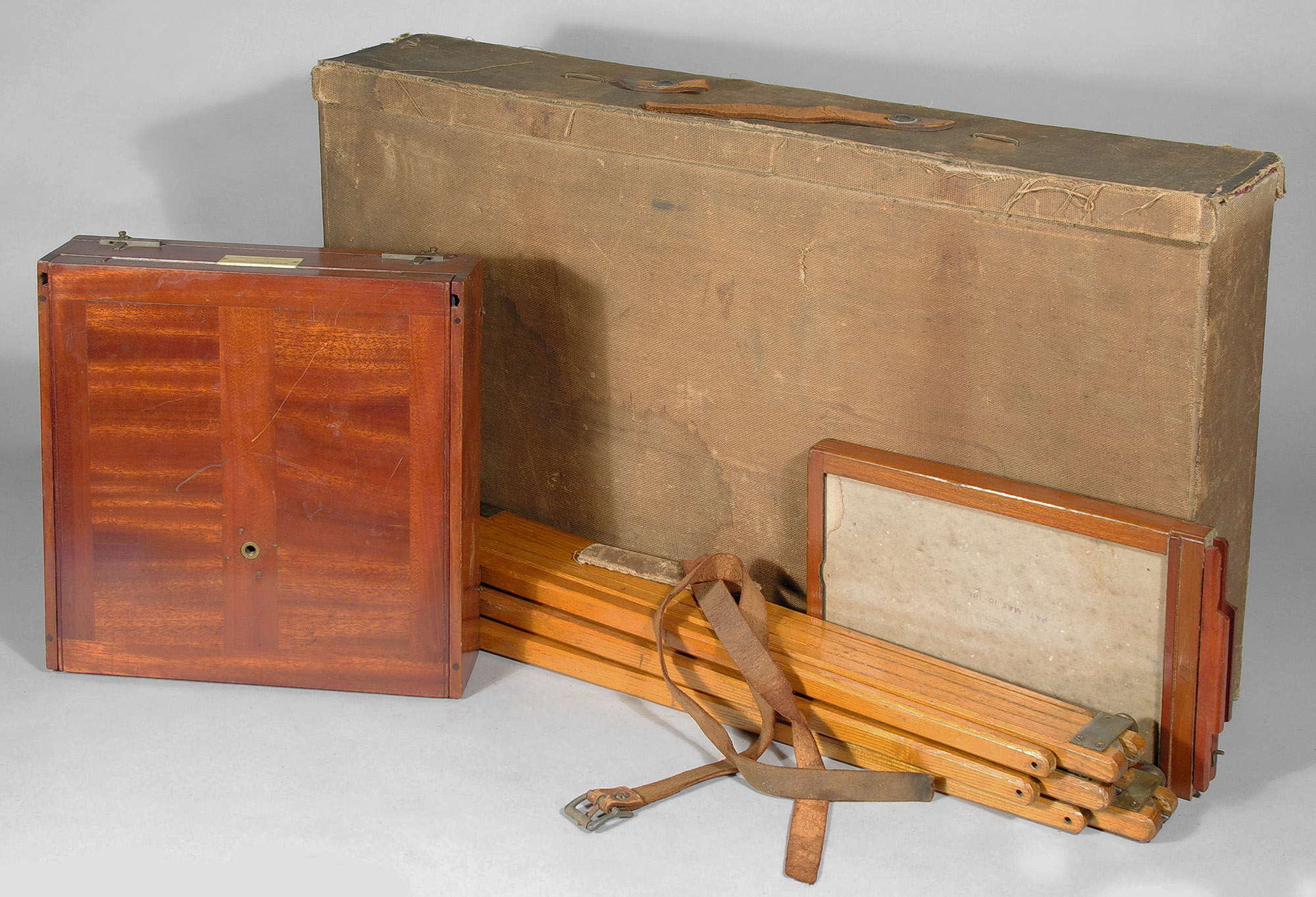
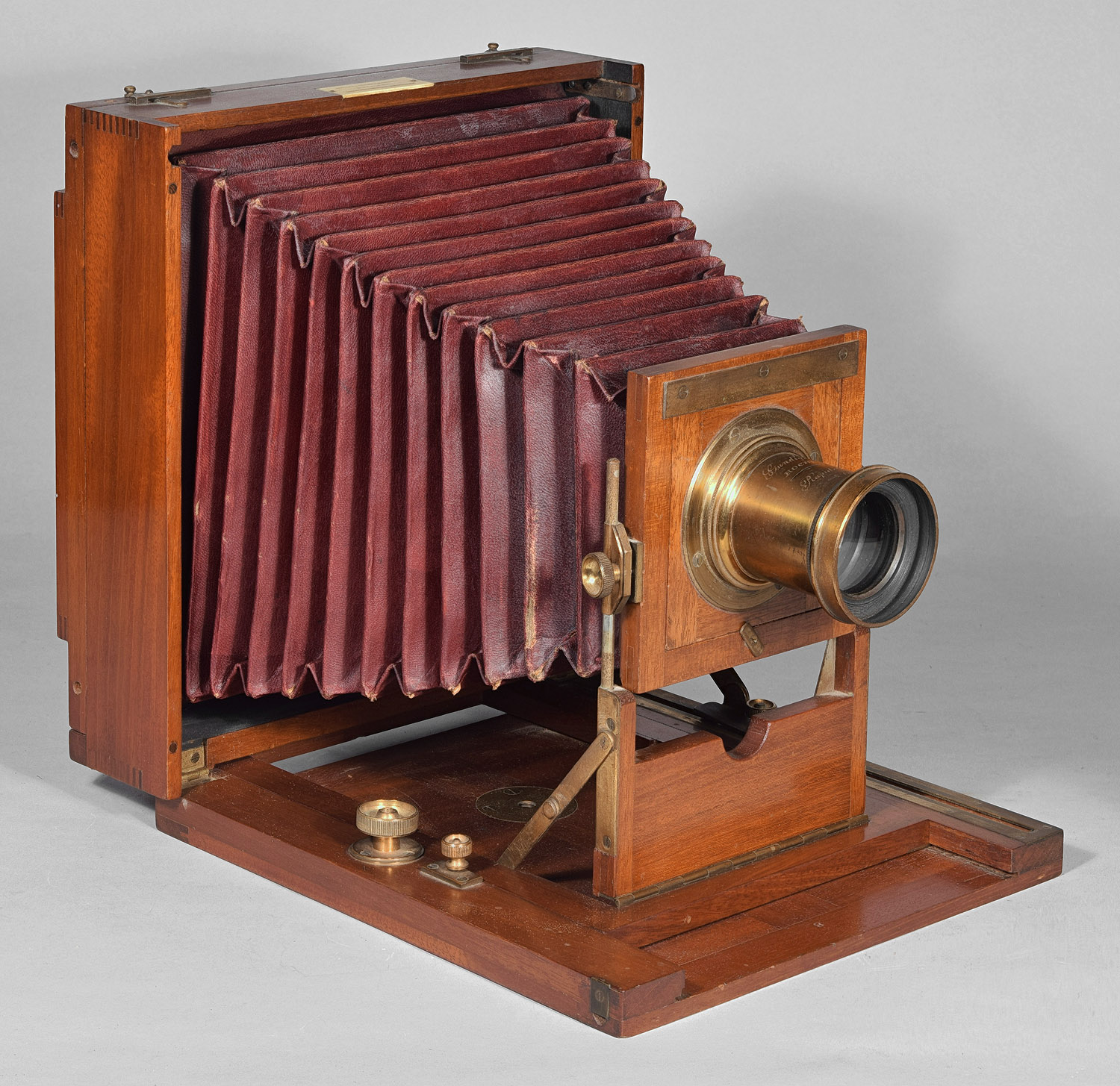
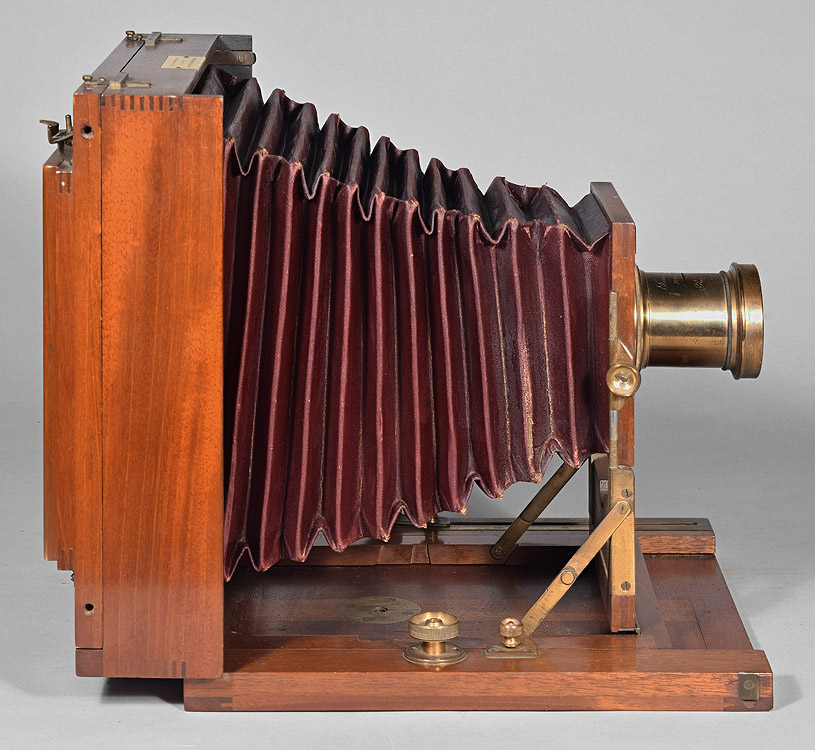
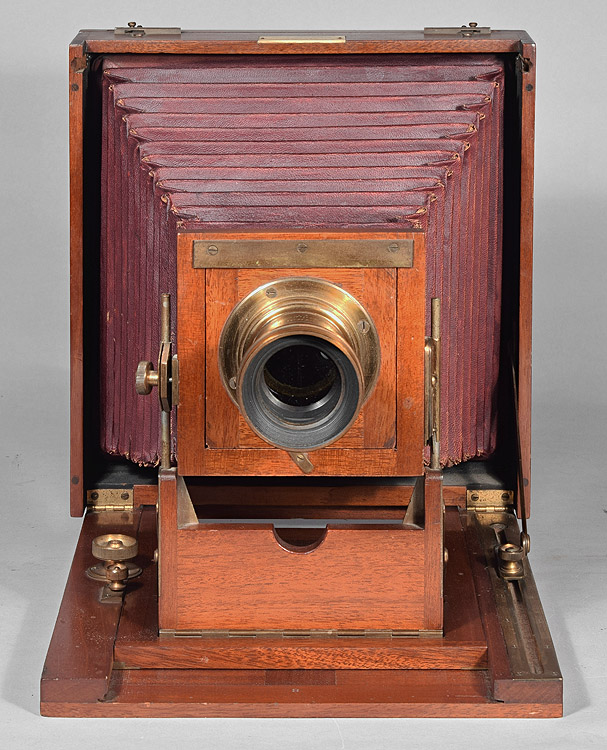
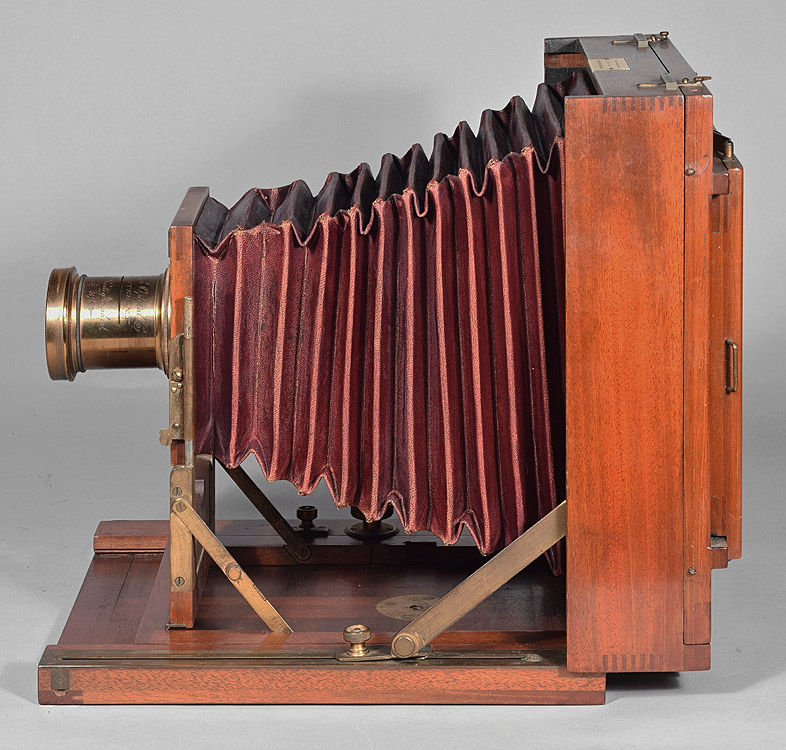
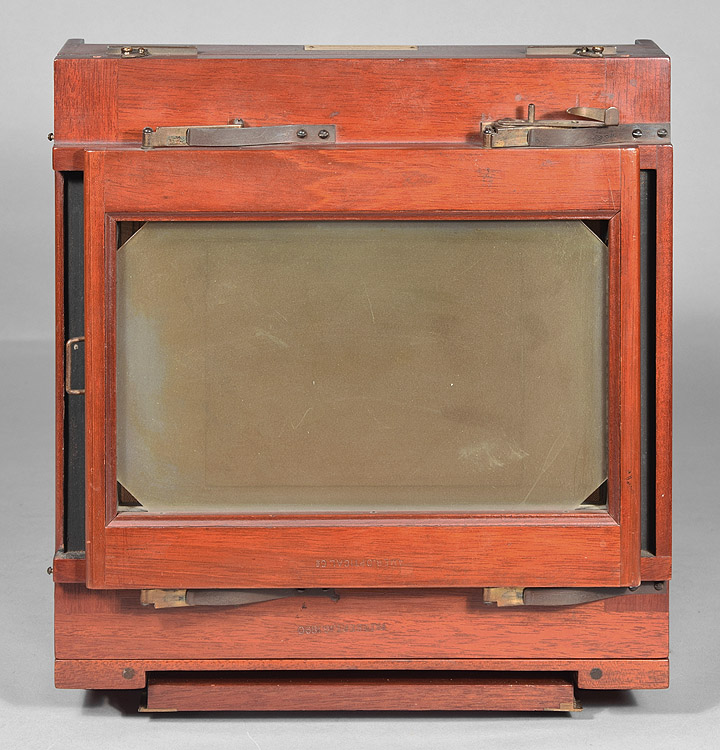
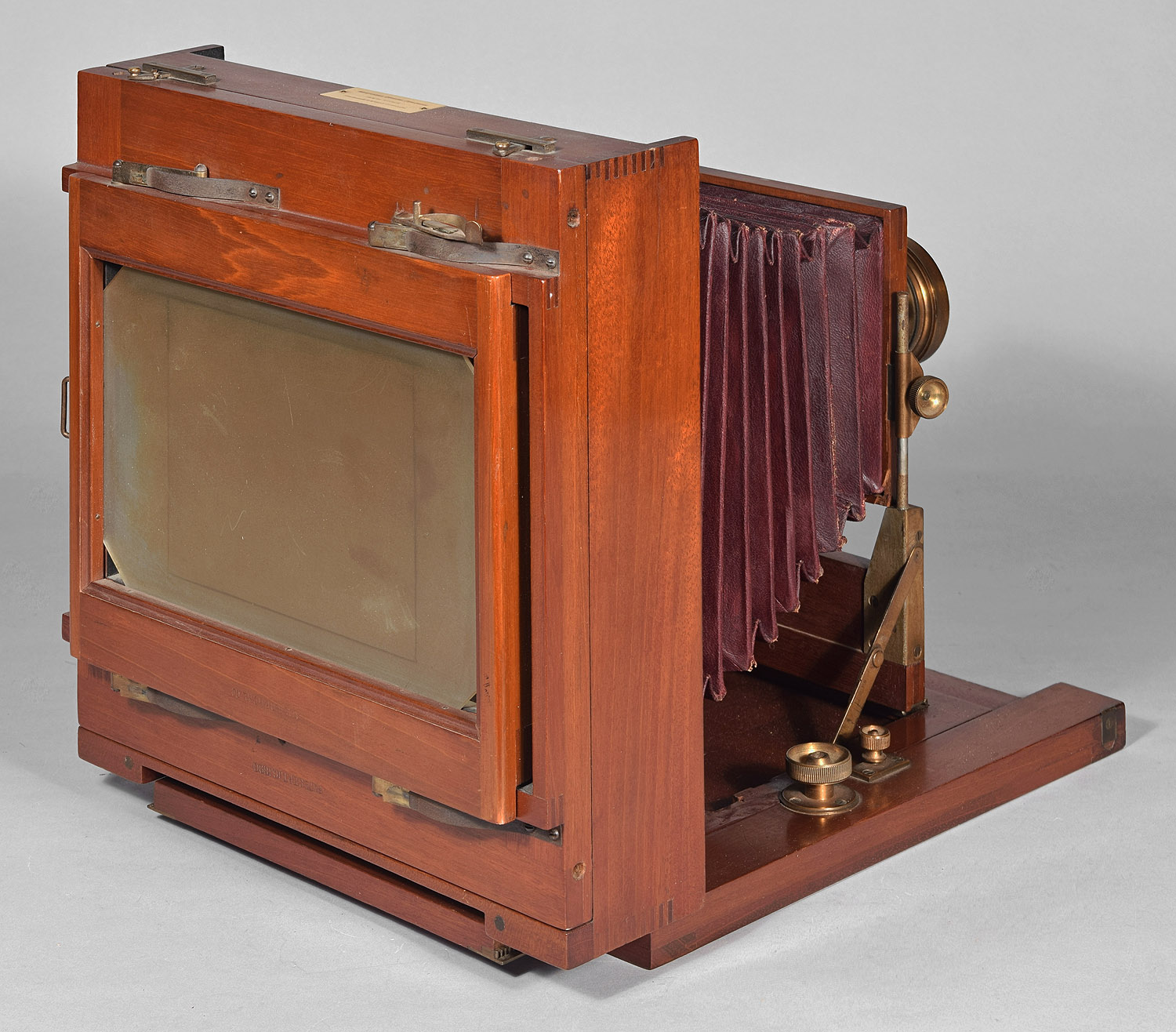
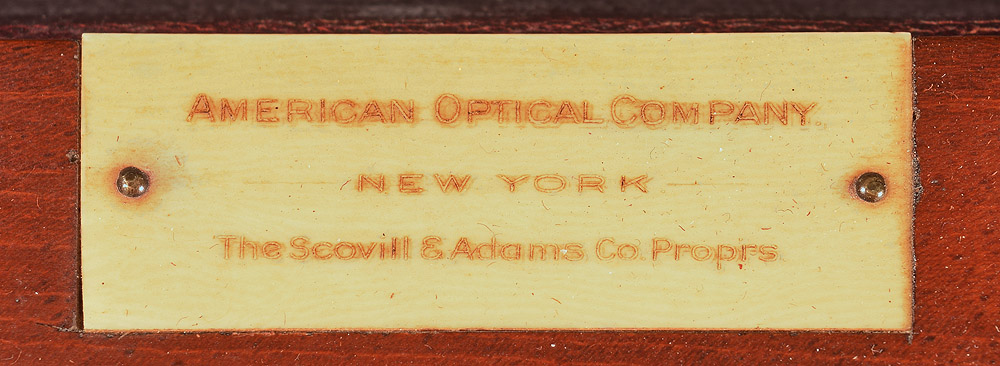
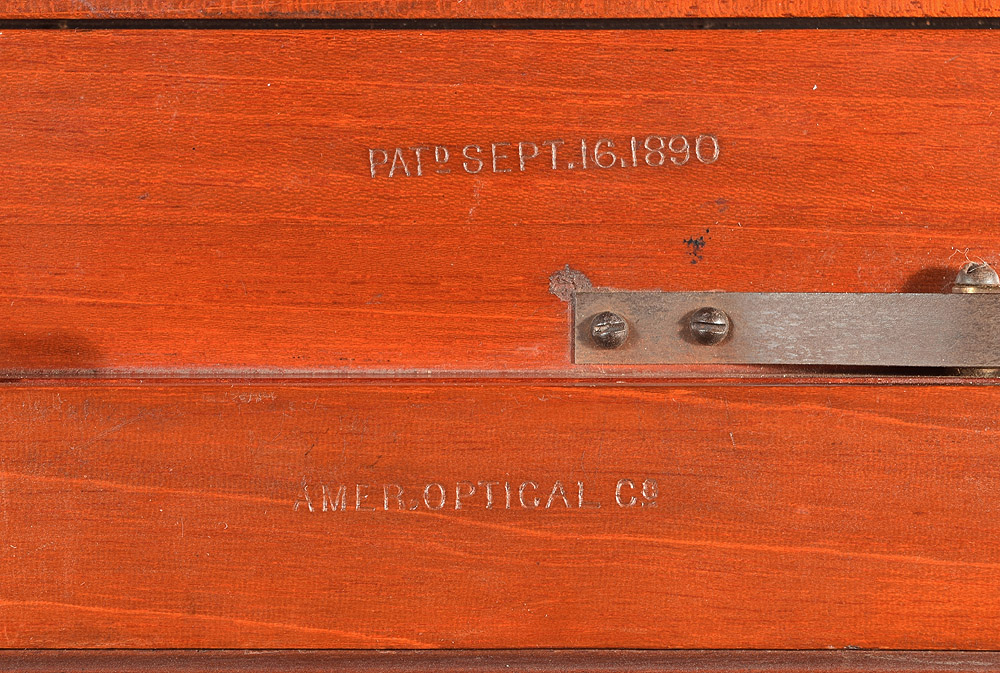
Manufacturer:
American Optical Co. New York, NY factory
Date Introduced: - ; Years Manufactured: c.1895
Construction: bed moves through
base to focus via rack and
pinion (gears internal to base); single swing; reversing by
removable back; three-piece lens board
Materials: mahogany body; mahogany base;
red leather bellows; brass hardware
Sizes Offered: at least
6½x8½ and 11x14
Notes:
The Irving is an English Compact-style, like the Albion. There are so far three variations whose design, while essentially the same, have different front standards:
Irving Variation 1.0: This is the Irving as described in the catalogs and pictured in the catalog engravings. It has a front standard made of all mahogany wood, which contains a conventional replaceable lens board. It has a focus knob on the right side of the platform that cranks the movable part of the platform forward and back. One unique feature on which the catalog description dwells is its lightweight celluloid plastic view screen instead of ground glass (advertised as a desirable weight-reducing feature in the catalogs). The ground glass frame is stamped with the Feb. 1, 1881 patent date for the lightweight focusing screen.
Irving Variation 1.2: This variation also has an all wood front standard, but the lens board is not easily removable, as it must slide all the way off. The focus knob is on the left side of the platform rather than the right. Finally, it does not have the light weight celluloid focus screen. That the focus screen was glass at the time of manufacture is indicated by the lack of the patent date stamp that is found in Variation 1.0.
Irving Variation 2.0: This variation has a front standard supported by brass rods, similar to the American Optical Compact View. The focus knob is on the right side of the platform, but it does not have the light weight celluloid focus screen.
All of these variations have the four-spring-type back, that appears to have been introduced about the time of the switch from Scovill Mfg. Co. to The Scovill & Adams Co. in 1889.
The American Optical/Scovill & Adams
Co. Four Spring Back
This back consists of a ground
glass frame connected to the back of the rear standard using four
springs, one in each corner, and each about 2-3 inches long. As
One end of each spring is tightly screwed to the rear standard, while
the other end applies pressure onto the middle of a hinge made of sheet
brass about 2 inches long, which is attached, one end to the ground
glass and the other to the rear standard, via round-head wood screws
long enough to act as axles. Three of the corners appear as in the
left hand photo below. The fourth corner contains the spring, but
also an extra bit of hardware attached to the sheet brass that catches
in an open position on a post. This is shown in the right hand
photo below.

This type back found on a number of cameras in this
collection, including: A similar back is found on the 1)
Scovill & Adams labeled
Acme Reversible Back View Camera Variation 3, 2)
unlabeled
Albion Variation 3, 3)
American Optical, Scovill & Adams Co., Prop'rs
labeled Compact View Variation 2 or Irving View Variation 2,
4) American Optical,
Scovill & Adams Co., Prop'rs labeled Irving View Variation 1.(known
to have been introduced in March, 1892), 5)
Scovill & Adams labeled
St. Louis View Camera Variation 3, and 6)
Star View Camera
(introduced 1890) - one example labeled The Scovill & Adams Co., the other example labeled
American Optical Co., Scovill & Adams Co., Prop'rs).
From the example cameras from six models that have four
spring backs, we find that all but one camera (and that one is unlabeled
and so indeterminate) are labeled and thus can be dated from when
The Scovill & Adams Co. were
proprietors of the
American Optical Co.,
that is, 1889-c.1899. It would therefore appear that the four
spring back was introduced approximately when
Scovill Mfg. Co. changed to
The Scovill & Adams Co. in
1889. The four spring design was patented in
1889 (granted to Scovill Mfg. Co. (W.H. Fuller, assignor), #407587, 23
Jul 1889), but, unlike most of their patents, the patent information is
not stamped into the wood or otherwise appear on cameras using the
patent.
References:
Back to American Optical Co. / Scovill Mfg. Co. (alphabetical)
